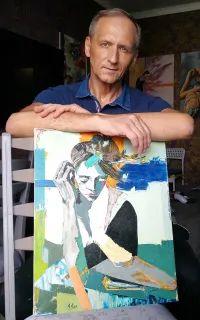
Alexander Aksyonov is a professional artist whose work captures the beauty of dance and the


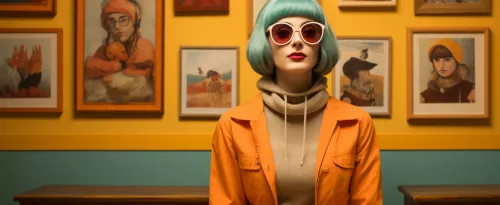
Abstract art is a visual language that uses shapes, colors, forms, and gestural marks to achieve its effect rather than depicting recognizable objects or scenes. It emphasizes the artist's expression and the viewer's interpretation, often evoking emotions or ideas without relying on realistic representation.
Abstract Art avoids realistic depiction in favor of shapes, colors, forms, and gestural marks. Often emotionally charged or conceptually rich, it invites personal interpretation and emphasizes freedom in visual language.
Acrylic art involves the use of fast-drying synthetic paint made from pigment suspended in acrylic polymer emulsion, known for its versatility and durability. Artists favor acrylics for their vibrant colors, ease of use, and ability to be applied to various surfaces, from canvas to wood.
African Art refers to the rich, diverse, and symbolic visual traditions of the African continent. Characterized by abstract forms, bold patterns, and spiritual or ritualistic significance, it spans sculpture, textiles, painting, and body art, often deeply rooted in tribal culture and storytelling.
Aquarell is the German word for watercolor. In painting, it refers to the use of water-based pigments on paper to create transparent, fluid, and luminous compositions—commonly used in landscapes, botanical studies, and illustration.
Archival Quality refers to materials that are acid-free and designed to resist deterioration over time. Artworks made or printed on archival paper or canvas are intended to last for decades without fading or yellowing, making them ideal for collectors.
An Artist Proof is a print outside the standard edition, traditionally reserved for the artist’s personal use. A/Ps are often identical to the main edition but considered more rare and collectible due to their limited quantity and unique labeling.
In art, the background refers to the part of the composition that appears farthest from the viewer, providing context and setting for the main subject. It plays a crucial role in enhancing the focal point, adding depth, and contributing to the overall mood and narrative of the artwork.
Balance in art is the distribution of visual weight within a composition, ensuring no single part overpowers the rest. It creates harmony and stability, whether achieved through symmetrical, asymmetrical, or radial arrangements.
Canvas is a durable fabric, typically made of linen or cotton, stretched over a wooden frame and used as a surface for painting. It is favored by artists for its texture and ability to hold paint well, making it ideal for various painting mediums like oil and acrylic.
A Certificate of Authenticity is an official document provided by the artist or gallery that verifies an artwork is genuine. It typically includes the artist’s name, artwork title, medium, dimensions, and date, and may be signed by the artist or authorized agent.
Chiaroscuro is a technique in art that uses strong contrasts between light and dark to create a sense of volume and three-dimensionality. This dramatic interplay of light and shadow enhances the emotional intensity and depth of the subject.
Colored Pencil Drawing involves using pigmented pencils to create detailed, vibrant works of art. This technique is versatile, allowing artists to achieve effects ranging from photorealism to impressionistic or minimalist styles.
Conceptual Art emphasizes the idea behind a work over its aesthetic or material aspects. Conceptual pieces often overlap with minimalist art, using simple forms to provoke thought and dialogue.
Contemporary Abstract Art refers to modern expressions of abstraction that prioritize form, color, and composition over representational imagery. Artists in this style use innovative techniques to challenge traditional boundaries, creating works that resonate with today's audiences.
Contemporary art encompasses current artistic practices and ideas, often created from the late 20th century to today. It spans various styles, mediums, and themes—frequently addressing social, political, or environmental topics through innovative forms.
Crayons are pigmented drawing sticks known for their vibrant color and accessibility. Often associated with youthful art, they are also used professionally for their layering ability and soft, waxy texture.
Cubism is an early 20th-century art movement that revolutionized traditional perspectives by breaking subjects into geometric shapes and fragmented forms. Cubist art often depicts multiple viewpoints simultaneously, challenging conventional representation and inspiring abstract and minimalist art.
Dada is an avant-garde art movement of the early 20th century that embraced absurdity and irrationality, challenging conventional aesthetics and cultural norms. It often used unconventional materials and techniques to provoke thought and question the nature of art itself.
Daguerreotype is an early photographic process developed in the 1830s, creating highly detailed images on silver-coated copper plates. Each daguerreotype is a unique, one-of-a-kind image, prized for its clarity and historical significance in the development of photography.
Earthworks are large-scale outdoor art installations created by manipulating the natural landscape, often using materials like soil, rocks, and vegetation. This form of art emphasizes the relationship between humans and the environment, often highlighting ecological and geological themes.
An easel is a stand used by artists to hold a canvas or drawing board in an upright position while they work. It provides stability and adjustable angles, making it easier for artists to paint or draw comfortably and view their work in progress.
Eclectic Art blends elements from various styles, eras, and media. It resists classification, embracing creative freedom and diverse influences to form a unique, often unpredictable visual language.
Emerging Artists are creators at the start of their careers, gaining recognition for their innovative approaches. Many work across genres, including abstract, conceptual, and minimalist art.
Expressionism emphasizes raw emotion over realism. With distorted forms, dynamic brushwork, and intense color, it channels the artist’s inner turmoil or joy, often creating a powerful psychological impact.
Figurative art refers to artworks that represent real-world objects, people, or scenes, often with a focus on accurate depiction and recognizable forms. It contrasts with abstract art by maintaining a clear connection to the physical world and visual reality.
Figurative Art portrays recognizable subjects from the real world, especially the human body. It spans styles from realistic to stylized, often balancing visual storytelling with technical skill.
Fine Art refers to visual artworks created for aesthetic and intellectual value. Traditionally encompassing painting, sculpture, and drawing, it is crafted with technical mastery and personal or cultural depth.
Fresco is a mural painting technique where pigments are applied onto freshly laid wet plaster, allowing the colors to become an integral part of the wall surface as it dries. This method is known for its durability and vibrant, long-lasting hues, often used in historical and religious artworks.
Gallery Wrap refers to a method of stretching a canvas so that the image continues around the edges, allowing the painting to be hung without a frame. It’s a common presentation choice for modern and minimalist interiors.
Geometric Abstraction focuses on the use of precise shapes, symmetry, and color relationships. Eschewing representational forms, it conveys structure, harmony, or conceptual clarity through mathematical aesthetics.
Gestural Painting is a style characterized by energetic, expressive brushstrokes that emphasize the movement of the artist’s hand. Often associated with abstract expressionism, this technique focuses on emotion and spontaneity over precise form.
Giclée is a high-quality fine art print created using pigment-based inks and archival paper or canvas. Known for its color accuracy and longevity, giclée printing is often used for limited-edition reproductions of original artworks.
Impressionism captures fleeting moments with quick brushstrokes, light-filled scenes, and vibrant palettes. Born in 19th-century France, it celebrates natural light and everyday life with a soft, dreamlike atmosphere.
Landscape refers to a genre of art depicting natural scenery such as mountains, forests, and waterways. Landscapes can range from realistic representations to minimalist art that captures the essence of a place with simplified forms.
Layered Stencil is a technique involving multiple stencil applications to build complex images. Often seen in street and pop art, it allows for repetition, sharp edges, and a graphic, bold aesthetic.
Limited Edition artworks are produced in a set number of copies, often signed and numbered by the artist. The smaller the edition size, the more exclusive and collectible the work typically becomes. Each piece in the edition is considered an original print, not a reproduction.
Lithography is a printmaking technique using a flat stone or metal plate. Based on the repulsion of oil and water, it allows for highly detailed and subtle image reproduction, often seen in fine art editions.
Minimalism is an art movement focusing on simplicity, clean lines, and essential elements. Minimalist art removes excess details, using form and color to evoke emotion and meaning.
Mixed Media refers to artwork created using more than one medium — for example, combining acrylic paint with ink, collage, or found objects. This approach allows artists to explore texture, layering, and contrast, often producing richly dimensional and expressive pieces.
Modernism is an artistic movement spanning the late 19th and early 20th centuries that sought to break away from traditional forms. Artists embraced innovation and abstraction, creating works that influenced later styles like minimalist art and abstract expressionism.
Monochrome Art involves the use of a single color or variations of one hue throughout a composition. This approach is often used in minimalist art and can highlight texture, shape, and subtle tonal shifts, creating a calm or dramatic effect depending on the execution.
Naive art is created by artists with no formal training, often featuring childlike simplicity, bright colors, and flattened perspectives. Its charm lies in its directness, sincerity, and disregard for traditional rules of proportion or realism.
Nature Paintings capture the beauty of the natural world, from lush landscapes to intricate floral studies. This genre encompasses a variety of styles, including abstract and minimalist art that reflects the essence of nature.
Nude Art explores the human form in its most natural state, often aiming to capture beauty, vulnerability, and emotion. From classical to contemporary interpretations, it emphasizes anatomy, expression, and often challenges societal norms.
Oil Painting is a classic medium using oil-based pigments, valued for its richness and durability. Oil paintings range from intricate realism to abstract and minimalist art, showcasing an artist's depth and versatility.
Open Edition prints are produced without a limit on quantity. While they are more accessible in price, they typically hold less value over time than limited editions due to their unrestricted availability.
Original Art is a one-of-a-kind creation directly produced by an artist. Unlike reproductions, original pieces reflect the artist's authentic vision, whether through vibrant abstraction or minimalist art.
Pastel Medium uses soft, chalk-like sticks of pure pigment. Known for its velvety texture and luminous color, it's ideal for portraits and landscapes, offering immediacy and delicate blending effects.
Pop Art is an influential art movement of the 1950s and 60s that draws inspiration from mass media, consumer culture, and advertising. Pop art often incorporates bold colors, repetitive patterns, and iconic imagery to critique or celebrate modern society.
Portrait refers to a genre of art focused on representing the likeness, personality, and mood of a person. Portraits can be realistic or abstract, with mediums ranging from minimalist art to highly detailed oil paintings.
Post-Impressionism emerged in the late 19th century, building on Impressionism with more structure, symbolism, and emotion. Artists like Van Gogh and Cézanne focused on personal vision and formal experimentation.
Postmodern Art is known for its eclectic, ironic, and conceptual approach. Emerging as a reaction to Modernism, it often mixes media, plays with cultural symbols, and blurs the lines between high art and popular culture.
Provenance refers to the documented history of ownership and origin of an artwork. It helps verify authenticity and adds value by showing an artwork’s background, previous collectors, or exhibitions. Strong provenance is especially important in the resale or investment market.
Realism is an art movement that emphasizes the depiction of subjects as they appear in everyday life, without embellishment or interpretation. Realist art focuses on lifelike accuracy, often portraying ordinary people and scenes.
Reproductions are high-quality copies of original artworks. These accessible pieces allow art lovers to enjoy famous works, whether traditional oil paintings or minimalist art, in their own homes.
Semi-abstract art balances recognizable subjects with abstract forms. It simplifies or distorts real-life objects while retaining enough detail for identification, often used in landscapes, figures, and still lifes to convey mood or movement.
Semi-art refers to creations that blend aesthetic intention with functionality or conceptual exploration. Often straddling craft, design, and fine art, it challenges traditional definitions while expressing artistic intent.
Semi-Realism bridges the gap between realism and stylization, blending realistic elements with imaginative or simplified features. This style is often used in minimalist art and conceptual pieces to convey emotional or narrative depth.
Sensual Paper refers to textured, high-touch paper surfaces that heighten the tactile experience of an artwork. It enhances visual richness and is often used in mixed media and expressive drawing or print techniques.
Still Life is an art genre focusing on inanimate objects like fruits, flowers, and household items. Whether detailed or abstract, still lifes often emphasize composition, texture, and color balance.
Street art refers to artworks created in public spaces, typically without formal approval. It includes murals, wheatpasting, stickers, stencils, and installations. Unlike graffiti, street art often carries intentional messages, blending activism, humor, and pop culture.
Surrealism is a 20th-century artistic and literary movement that explores the subconscious, dreams, and imagination. Surrealist art often features unexpected juxtapositions, fantastical imagery, and symbolic elements, creating works that blur the line between reality and fantasy.
Symbolism is an art movement where artists use visual symbols, metaphors, and dreamlike imagery to express abstract ideas, emotions, or spirituality. Common in 19th-century European painting, it's often associated with mysticism, allegory, and psychological depth.
Tempera Batik combines tempera painting and traditional batik techniques. Artists layer wax and pigments, then remove sections to create intricate patterns and textures with a unique, handcrafted look.
Texture in art refers to the tactile or visual surface quality of a work. Artists create texture using techniques like layering paint, adding collage materials, or varying brushstrokes, adding depth to minimalist art or highly detailed compositions.
Textured paper has a noticeable surface grain or tooth that affects how media—like watercolor, charcoal, or ink—interacts with the surface. Popular in fine art printing, drawing, and painting, it adds visual and tactile depth to artwork.
A Triptych is an artwork composed of three panels that are typically displayed side by side. Common in both traditional and contemporary formats, triptychs allow artists to tell a visual story across multiple segments or play with symmetry and rhythm in a space.
Urban art is a broad category of contemporary visual art rooted in the street culture of cities. It includes graffiti, murals, stencil work, and mixed media often found in public spaces. Urban art bridges street art and fine art, making bold social or political statements.
Watercolor is a painting technique using water-soluble pigments to create transparent, light-filled works. Popular for landscapes and still lifes, watercolors range from detailed realism to loose, expressive styles.
Once a month be the first to know about new trends, artworks and offers

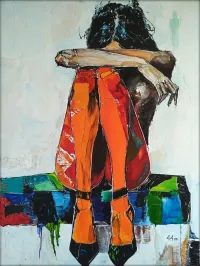
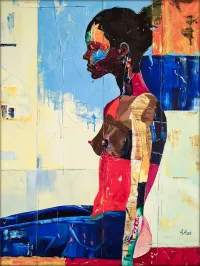
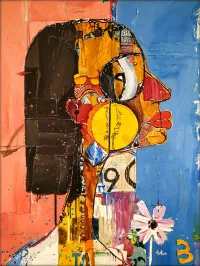

Alexander Aksyonov is a professional artist whose work captures the beauty of dance and the
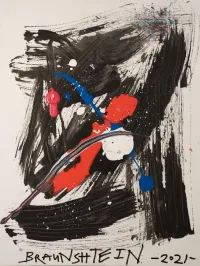
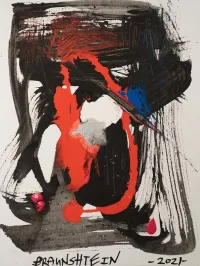
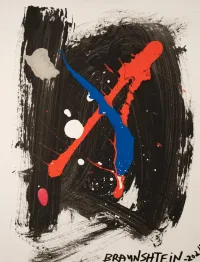
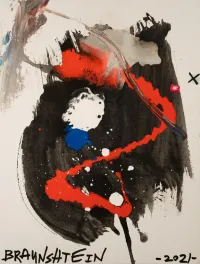

Doron Braunshtein is an Israeli multidisciplinary writer, playwright, and Dada artist who works

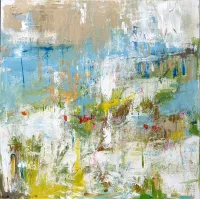
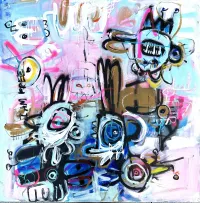
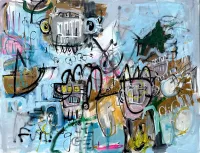
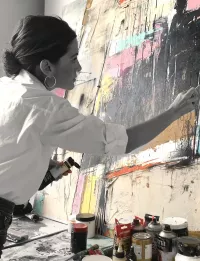
Karin has cultivated a distinctive painting style that serves as a gateway to her inner world.


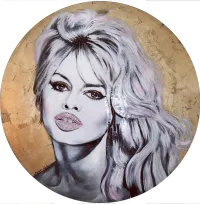
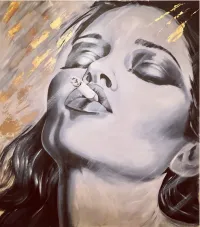

Sylvia Cohen is a contemporary artist whose emotionally resonant portraits, figures, and resin
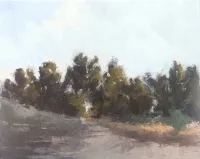
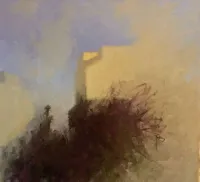
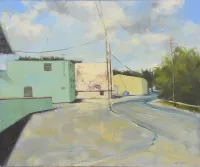
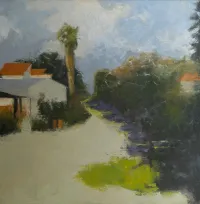
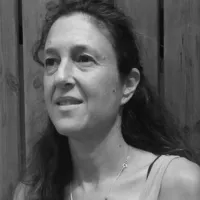
Noa Arbel is an Israeli painter, who paints in oil, landscapes and various places.
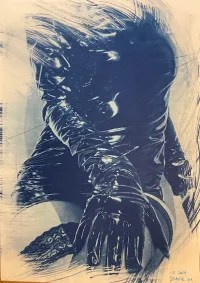
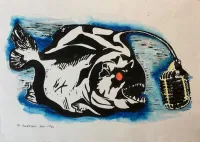

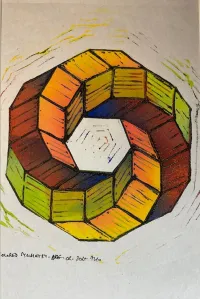

Christian Reimann – German Artist Fusing Classic Printmaking Techniques with Modern Experimental
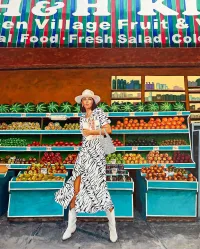



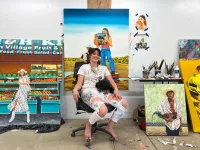
Marisa Macklin is a Contemporary Figurative Painter born in 1989 in Washington D.C.
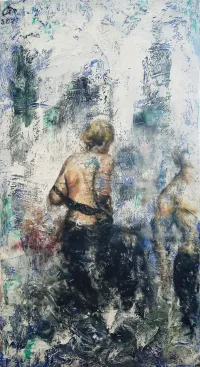

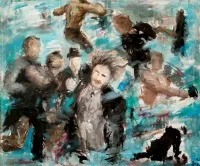
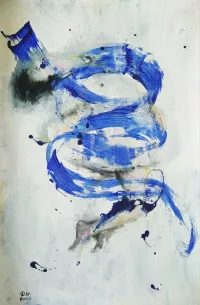

Daniel Wille is an artist based in Austria whose paintings have been exhibited in the United
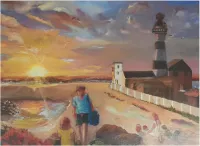
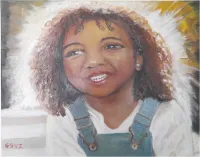
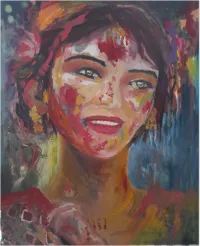
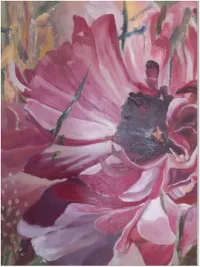

Glodina Gordon van Zyl an artist blending emotion and identity through figurative oil on canvas
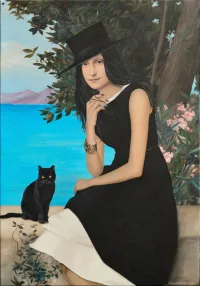

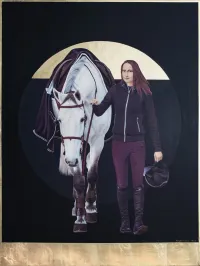

Nataliya Bagatskaya is an artist with a bold, insightful approach to contemporary acrylic